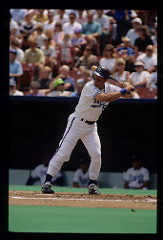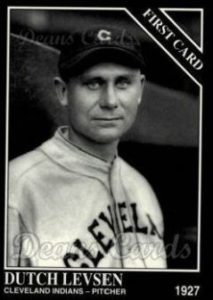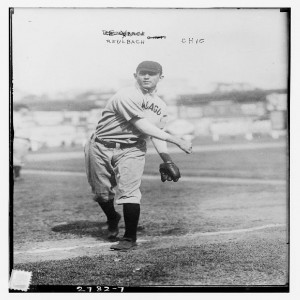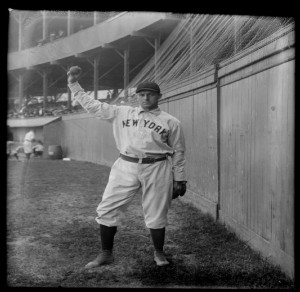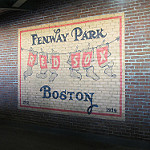![[Ty Cobb, Detroit AL (baseball)] (LOC) by The Library of Congress Ty Cobb photo](https://baseballroundtable.com/wp-content/uploads/2018/02/3640763239_781e51bd2e_m_Ty-Cobb.jpg)
Ty Cobb earned an MLB record 12 batting crowns. Photo by The Library of Congress
Special thanks to reader Jeff Gordon for spotting a pair of errors (since corrected), particularly the original omission of Paul Waner. Corrections have been made. Since this post was first published, Negro Leagues records from 1920-48 have also been added to the MLB record books. I have added three-time Negro Leagues batting champions to the listing.
- The active players with at least a trio of batting crowns are: Miguel Cabrera (4); Jose Altuve (3); Joe Mauer (3). (Note: as of 2023, Mauer no longer active).
- Since 1900, there are only four retired players with three or more batting titles who are not in the Hall of Fame – Bill Madlock (4); Tony Oliva (3); Pete Rose (3); Larry Walker (3). Pre-1900 three-time batting leaders not in the Hall are Ross Barnes (3) and Pete Browning (3). Note: As of 2023, Oliva is in the HOF.)
- Only three players with three or more batting titles did not win at least two consecutive batting crowns – George Brett; Pete Browning; Harry Heilmann. Long hot streaks pay off.
PLAYERS WITH THREE OR MORE BATTING CROWNS …
WITHOUT TWO CONSECUTIVE TITLES
George Brett won three batting titles – each one in a different decade. Photo by MissouriStateArchives
Twenty-two of the twenty-five players with three of more batting titles won at least two consecutive titles at least once in their careers. Here are the three who didn’t.
The Tigers’ Harry Heilmann was especially effective in odd-numbered seasons, leading the American League in batting in each of the odd-numbered years (four) between 1921 and 1928.
The Royals’ George Brett won his first AL batting crown in 1976 and then seemed to wait for the decade to turnover to top his league again – winning titles in 1980 and 1990. It makes him the only player to win a batting crown in three different decades.
Pete Browning won his three titles without ever leading the American or National League. He topped the American Association in 1882 and 1885 with the Louisville Colonels and led the Players’ League in 1890 with the Cleveland Infants. Since the Player’s National League of Professional Baseball Clubs lasted just one season, Browning is its only batting champion. (Side note: An MLB Committee designated the Players’ League as official major league in 1968.)
- The Tiger’s Ty Cobb leads the American League and all MLBers with 12 batting titles and also captured the most consecutive titles at nine.
- The Padres’ Tony Gwynn and the Pirates’ Honus Wagner share the National League top spot with eight titles. Hornsby’s six consecutive titles top the NL.
WHAT’S A GUY GOTTA DO?
Despite ten consecutive seasons of 200+ hits (2001-2010, leading the league seven times), Ichiro Suzuki won only two batting titles.
- Players with three or more batting titles and a Triple Crown (AVG.-HR-RBI) are: Ted Williams (two Triple Crowns); Rogers Hornsby (two Triple Crowns); Miguel Cabrera; Ty Cobb; Nap Lajoie; Carl Yazstremski.
- Only five players have won a batting title in their rookie MLB campaign and three of them are on this list – Ross Barnes, Pete Browning and Tony Oliva. (The other to rookie batting leaders are Abner Dalrymple and Ichiro Suzuki.) Oliva is the only player to win the batting crown in both his rookie and sophomore seasons.
—–FULL LIST OF MLB PLAYERS WITH THREE OR MORE BATTING TITLES —–
Twelve Titles
Ty Cobb … 1907-08-09-10-11-12-13-14;-15; 1917-18-19
Eight Titles
Tony Gwynn … 1984; 1987-88-89; 1994-95-96-97
Honus Wagner … 1900; 1903-04; 1906-07-08-09; 1911
Seven Titles
Rod Carew … 1969; 1972-73-74-75; 1977-78
Stan Musial … 1943; 1946; 1948; 1950-51-52; 1957
Rogers Hornsby … 1920-21-22-23-24-25; 1928
Six Titles
Ted Williams … 1941-42; 1947-48; 1957-58
Five Titles
Wade Boggs … 1983; 1985-86-87-88
Dan Brouthers … 1882-83; 1889; 1891-92
Four Titles
Miguel Cabrera … 2011-12-13; 2015
Bill Madlock … 1975-76; 1981; 1983
Roberto Clemente … 1961; 1964-65; 1967
Harry Heilmann … 1921; 1923; 1925; 1927
Cap Anson … 1879; 1881; 1887-88
Three Titles
Jose Altuve – 2014; 2016-2017 (still active)
Joe Mauer … 2006; 2008-09 (still active)
Larry Walker … 1998-99; 2001
George Brett … 1976; 1980; 1990
Pete Rose … 1968-69; 1973
Carl Yastrzemski … 1963; 1967-68.
Tony Oliva … 1964-65; 1971
Paul Waner ... 1927, 1934, 1936
Monte Irvin … 1940, 1941, 1946 (Negro National League II)
Josh Gibson … 1936, 1937, 1939 (Negro National League II)
Oscar Charleston … 1921, 1924, 1925 (one Negro National League, two Eastern Colored League)
Nap Lajoie … 1901; 1903-04
Jesse Burkett … 1895-96; 1901
Pete Browning … 1882; 1885; 1890 (Two American Association, one Players’ League)
Ross Barnes … 1872-73; 1876 (Two National Association)
I tweet baseball @DavidBBRT
Follow/Like the Baseball Roundtable Facebook page here.
Member: Society for American Baseball Research; The Baseball Reliquary; The Negro Leagues Baseball Museum.
